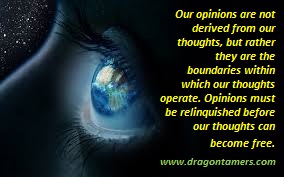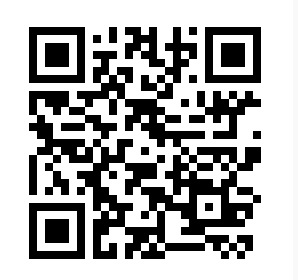Being a science based individual, I always find stories and photos from space fascinating and can’t resist the temptation read and view them. One day I came across a photo from National Geographic of the surface of the moon. Of course I have seen similar photos countless times, but this one caught my eye because it appeared as if something wasn’t right. The craters on the surface didn’t appear as craters, but instead as rings with raised “bubbles” in the center.
If you’re thinking the article is about pictures of the moon, please stay with me and read on because I promise you it is not.
I stared at the picture for a few moments trying to understand what I was seeing. At first I toyed with the idea that perhaps the low resolution photo was somehow published “In reverse” or as a negative image. Studying the image further, I wondered if what I was seeing could be a trick of the eye, sort of like visual illusion memes asking “which line is longest?”, or “what color was this dress?” . So closing my eyes for a moment, I reopened them “Shifted” my focus when I looked at the picture. I do not have words to describe what I mean by “Shifted” but it felt the same as when I used to look at those pictures of a pattern with a hidden image inside like a “Whale in the Ocean” or a “Mountain landscape”.
When I looked again, I could see the lunar craters as I believed they should be, raised ridges on the outside and a depression in the center. After a moment, I allowed my focus to “Shift” again and once again the craters appeared as depressed circles around raised bubbles. I repeated this process several times and realized that I actually had conscience control over what perspective I wanted to enjoy.
This started me thinking about the way we process data. Clearly I was holding the photo in my hands so it was unchanging, not some trick of shifting CGI, yet depending upon which “focus” I, chose to select the picture would inverse itself to the previous view. Each view was real as seeing it “with my own eyes”, yet the two views I could perceive were clearly inverted to each other. Walking the path to free thinking, I am well aware of the basic truth that there is a very distinct difference between what we know and what we have been told. Since I have never been to the moon personally, all the information I had on it was items I had been told. Most written descriptions I see of the moon refer to “Craters” as impact areas, so was it possible I that I only assumed that these impact areas resulted in a crater? After all when you toss a rock into a pond, upon impact that rock creates a “Crater” on the surface of the pond, however an instant later, water rushes in and for fraction of a second, the “impact area” is exactly an inverse to a crater. Perhaps the meteor impact caused enough heat to melt surface of the moon on the immediate area enough for it to act like a rock dropped in a pond. Considering all of this, how did I know which of the two views my eyes could perceive equally as well was the “Correct” one?
This is where the discussion about moon craters begins to change course. I realized that I never really knew that impact areas on the moon were concaved to the surface, having only made that assumption because they were called craters by many; however it was my Opinion that was the case. Holding that opinion I expected that any photos of the moon would show objects with raised walls around a concaved bowl. So when I saw a photo that seems to display the opposite, my first thoughts and ideas went to trying to figure out what was “wrong” with the photo.
This brings us to two very important points in understanding traps in our thinking.
First, because the photo didn’t fit with my preconceived opinion, there had to be something wrong about it.
Second but more importantly, what I perceived in the photo was variable depending on choice.
This story of the moon photo outlines how we process information and what holds us back from seeing truth when it is presented to us.
The reality of our world is that all of us hold a perception that is shaped by opinions taught to us as children in the approved school system and by the media programming we receive including our news outlets. As I previously discussed these sources are filled with Menagerizations, incomplete information, misinformation, and they tell you what “popular opinion” is. These sources shape and define our opinions while also blurring the line between opinion and fact by presenting opinion framed as fact.
Once opinions are formed within our minds, they also create an infrastructure within our reality. This infrastructure creates strong expectations on what information will be telling us, as well as directing us how to interpret information. These opinions also include very strong social influences based upon the fear of being perceived as being different by our peers. It is here that the mind trap is laid. When information, no matter how realistic, no matter how detailed, no matter how much proof is present to back it up, that contradicts our opinion comes our way, we work very hard not to validate it, but rather to find supporting voices of our opinion. When this search results in finding voices supporting and sharing our pervious opinion, those caught in the mind cage, will claim that the new information has been “Debunked”.
Indeed the term “Debunked” is a locking concept (for the mind cage) created by those who seek to control opinion and thought. Think about the meaning communicated when you hear the word for a moment. It not only intends to indicate that the information is not accurate, but it also conveys ridicule on the person expressing the information. To be “Debunked” is not to be corrected, but to be labeled and ridiculed as crazy, foolish, or ridicules. Additionally it communicates these same attributes on anyone who ever even took the time to ponder the information. It is intended to shame the target audience for ever even looking at information from that source.
Those exposing truth use terms like exposing, revealing, uncovering, or illuminating. Why, because we all were once fooled by mainstream propaganda and know that there is no shame in it.
Individual opinion holds a much greater weight in personal information processing then nearly anything else. We ultimately believe what we want to believe, no matter how disconnected that maybe from the facts present. Closely following individual opinion is the perceived personal cost to an individual’s social standing and ego that may occur if the presented information turns out to be correct. Ironically the actual validity of the facts seems to have the smallest relevance within personal information processing.
Interpretation of information is always a matter of choice, however, that choice is heavily influenced and limited by our fears of social rejections (looking foolish), desire to be masters of our world, (fear of change), one’s level of arrogance and self-importance (ego), but most of all the inability to imagine that there can be more to the story then what we personally believe.
Only by acknowledging the reality that these subjective influences are a major contributor to our choice in how to perceive information can we side step the mind cage they would lock us in. Failure to acknowledge these influences always results in faulty reasoning controlled by subjective bias.




